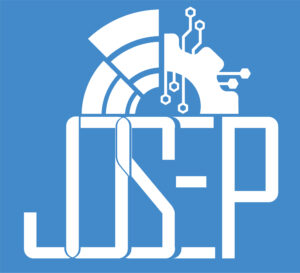The extraction behaviour of vanadium (V) from nitric acid solutions was studied using technical grade D2EHPA in kerosene as an extractant. The effects of aqueous pH, the concentration of vanadium (V) and nitrate ion in the aqueous phase, and the concentration of D2EHPA in the organic phase were investigated. The extraction equilibration time was 30 min. Metal ion dependencies appeared non-ideal due to the non-constancy of the aqueous phase acidity and the equilibrium extractant concentration. Two types of extraction mechanisms originated from the study of pH dependency. The study conceded that the extraction of vanadium (V) occurred via ion exchange or chelation type of extraction when the pH(eq) <2.50. On the other hand, the solvated ion-pair extraction mechanism occurs when the pH(eq) was above 2.50. The extractant dependencies showed that vanadium (V) species were extracted by one molecule of D2EHPA. The salting-out effect was observed from the effect of nitrate ion concentration. The effect of various types of diluents on vanadium (V) extraction with technical grade D2EHPA was studied; kerosene appeared to be a suitable diluent. The temperature dependence data revealed that the system was exothermic with the ΔH value of -12.34 kJ/mol. The loading capacity was 6.11 g vanadium (V) per 100 g extractant. The H2SO4 (0.5 mol/L) was the right stripping agent for the extracted species.
Skip to content
Skip to footer
Liquid-liquid extraction equilibrium study of vanadium(V) from nitrate medium by technical grade D2EHPA dissolved in kerosene
Original Research Article
Extraction of metals
Liquid-liquid extraction equilibrium study of vanadium(V) from nitrate medium by technical grade D2EHPA dissolved in kerosene
Aneek Krishna Karmakar, Ranjit Kumar Biswas and Amzad Hossen
Department of Applied Chemistry and Chemical Engineering, University of Rajshahi, Rajshahi-6205, Bangladesh
This work is licensed under CC BY-SA 4.0
Downloads : 1433
Abstract
References
How to Cite
- ACM
- ACS
- APA
- ABNT
- Chicago
- Harvard
- IEEE
- MLA
- Turabian
- Vancouver
Aneek Krishna Karmakar, Ranjit Kumar Biswas and Amzad Hossen
I.H. 2024. Liquid-liquid extraction equilibrium study of vanadium(V) from nitrate medium by technical grade D2EHPA dissolved in kerosene. Journal of Science and Engineering Papers .
August 6, 2024.
Doi: 10.62275/josep.24.1000009.
Aneek Krishna Karmakar, Ranjit Kumar Biswas and Amzad Hossen
Liquid-liquid extraction equilibrium study of vanadium(V) from nitrate medium by technical grade D2EHPA dissolved in kerosene.
journal 2024, 6.
Aneek Krishna Karmakar, Ranjit Kumar Biswas and Amzad Hossen
I.H. 2024. Liquid-liquid extraction equilibrium study of vanadium(V) from nitrate medium by technical grade D2EHPA dissolved in kerosene. .Journal of Science and Engineering Papers .
6 (1).
https://doi.org/10.62275/josep.24.1000009.
Aneek Krishna Karmakar, Ranjit Kumar Biswas and Amzad Hossen
I.H. Liquid-liquid extraction equilibrium study of vanadium(V) from nitrate medium by technical grade D2EHPA dissolved in kerosene. Journal of Science and Engineering Papers .
2024.
Aneek Krishna Karmakar, Ranjit Kumar Biswas and Amzad Hossen
2024." Liquid-liquid extraction equilibrium study of vanadium(V) from nitrate medium by technical grade D2EHPA dissolved in kerosene." Journal of Science and Engineering Papers .
6 (1).
https://doi.org/10.62275/josep.24.1000009.
Aneek Krishna Karmakar, Ranjit Kumar Biswas and Amzad Hossen
I.H. 2024. " Liquid-liquid extraction equilibrium study of vanadium(V) from nitrate medium by technical grade D2EHPA dissolved in kerosene." Journal of Science and Engineering Papers .
6 (1).
https://doi.org/10.62275/josep.24.1000009.
Aneek Krishna Karmakar, Ranjit Kumar Biswas and Amzad Hossen
, "Liquid-liquid extraction equilibrium study of vanadium(V) from nitrate medium by technical grade D2EHPA dissolved in kerosene". .Journal of Science and Engineering Papers .
journal Aug, 2024.
Aneek Krishna Karmakar, Ranjit Kumar Biswas and Amzad Hossen
"Liquid-liquid extraction equilibrium study of vanadium(V) from nitrate medium by technical grade D2EHPA dissolved in kerosene." Journal of Science and Engineering Papers .
Aug, 2024.
https://doi.org/10.62275/josep.24.1000009.
Aneek Krishna Karmakar, Ranjit Kumar Biswas and Amzad Hossen
"Liquid-liquid extraction equilibrium study of vanadium(V) from nitrate medium by technical grade D2EHPA dissolved in kerosene." Journal of Science and Engineering Papers .
(Aug 6, 2024).
https://doi.org/10.62275/josep.24.1000009.
Aneek Krishna Karmakar, Ranjit Kumar Biswas and Amzad Hossen
Liquid-liquid extraction equilibrium study of vanadium(V) from nitrate medium by technical grade D2EHPA dissolved in kerosene. Journal of Science and Engineering Papers .
journal [ Internet ] 6 Aug, 2024.
[ Cited 6 Aug, 2024 ]
6 (1).
https://doi.org/10.62275/josep.24.1000009.
Keywords
vanadium (V), extraction, nitrate ion, kerosene, D2EHPA


